Chronicles of the Second World War: North African Campaign
A British pilot with a lot of experience flying in the desert lands the Kittyhawk fighter, which is in service with the Sharknose squadron, during a sandstorm in the Libyan Desert, 2 on April 1942. The mechanic, who sits on the wing of the aircraft, indicates the direction of the pilot. (AP Photo)
Australian troops are attacking a German stronghold under a covering smoke screen in the Western Desert in North Africa, November 27, 1942. (AP Photo)
German General Erwin Rommel rides at the head of the 15th tank divisions between Tobruk and Sidi Omar, Libya, 1941. (NARA)
Australian soldiers march behind tanks during a rehearsal offensive in the sands of North Africa, January 3 and 1941. The infantry accompanied the tanks as a precaution against air raids. (AP Photo)
German Junkers U-87 dive bomber “Stuck” attacks a British base near Tobruk, Libya, October 1941 of the year. (AP Photo)
The British Royal Air Force pilot sets up a cross from the wreckage on the grave of Italian pilots whose planes crashed during a battle in the Western Desert in Mersa Matruh, October 31 1940. (AP Photo)
Armored personnel carrier "Bren Carrier" was in service with the Australian cavalry in North Africa, January 7, 1941. (AP Photo)
British tank crews laugh at comics in an Italian newspaper in a war zone in North Africa, January 28, 1941. One of them holds in his arms a puppy found during the capture of Sidi Barrani, one of the first Italian strongholds that capitulated during the War in North Africa. (AP Photo)
An Italian flying boat, attacked by fighters of the Royal Air Force of Great Britain, burns off the coast of Tripoli. The body of an Italian pilot swims in the water near the left wing. (AP Photo)
British sources claim that this picture shows the Italian soldiers who died from British artillery fire south-west of Ghazala during one of the Libyan battles in January 1942 of the year. (AP Photo)
One of the Italian prisoners of war captured in Libya and sent to London, in the cap of the African corps, January 2 1942. (AP Photo)
Italian leading positions near Tobruk, Libya, January 6 1942. (AP Photo)
British Bristol Blenheim bombers set off for a raid in Cyrenaica, Libya, accompanied by fighters, February 26 1942. (AP Photo)
British intelligence officers monitor the movement of the enemy in the Western Desert near the Egyptian-Libyan border in Egypt, February 1942. (AP Photo)
The talisman of the Royal Air Force squadron of Great Britain in Libya, a monkey named Bass, plays with a Tomahawk fighter pilot in the Western Desert, February 15 1942. (AP Photo)
This seaplane was in service with the rescue service of the Royal Air Force of Great Britain in the Middle East. He patrolled the lakes in the Nile Delta and assisted pilots who made forced landings on the water. The photo was taken on 11 March 1942 of the year. (AP Photo)
A British soldier wounded during a battle in Libya is lying on a bed in a tent of a field hospital, 18 June 1942. (AP Photo / Weston Haynes)
British General Bernard Montgomery, commander of the 8 of the British Army, watches the battle in the Western Desert from the gun tower of the tank M3 "Grant", Egypt, 1942 year. (AP Photo)
Anti-tank guns on wheels were highly mobile and could move quickly across the desert, delivering unexpected blows to the enemy. In the photo: the 8 Army mobile anti-tank gun shoots in the desert in Libya, July 26 1942. (AP Photo)
This snapshot of the air raid on the airbase of the Axis countries “Martuba”, which is located near the city of Derna in Libya, was taken from the board of a South African aircraft taking part in the 6 July 1942 raid. The four pairs of white stripes at the bottom are the dust raised by the planes of the Hitler coalition, who try to avoid bombing. (AP Photo)
During his stay in the Middle East, British Prime Minister Winston Churchill visited El Alamein, where he met with the commanders of brigades and divisions, and also inspected the Australian and South American military formations in the Western Desert, August 19 1942 of the year. (AP Photo)
Flying at low altitude aircraft of the Royal Air Force of Great Britain accompanies New Zealand cars, which are sent to Egypt, 3 August 1942 of the year. (AP Photo)
British troops patrol the Western Desert in Egypt on the American Stunt M3, September 1942. (AP Photo)
The guard protects a wounded German officer found in a desert in Egypt in the early days of the British offensive, 13 November 1942. (AP Photo)
Some of the 97-mi German prisoners of war captured by the British army during the attack on Tel el-Eysu in Egypt, 1 September 1942 of the year. (AP Photo)
Allied convoy escorted aviation and ships, sailing towards French North Africa near Casablanca in French Morocco during Operation Torch, a major British-American invasion of North Africa, November 1942. (AP Photo)
American landing barges head for Fedala in French Morocco during a landing operation in early November 1942. Fedala was located in 25 km north of Casablanca, French Morocco. (AP Photo)
The anti-Hitler coalition forces land on the coast near Casablanca in French Morocco and follow the traces left by the previous squad, November 1942 of the year. (AP Photo)
American soldiers with bayonets accompany representatives of the Italian-German Armistice Commission in Morocco to the assembly point for departure to Fedala north of Casablanca, November 18, 1942. Commissioners were suddenly attacked by an American landing party. (AP Photo)
French soldiers heading to the front line in Tunisia shake hands with American soldiers at the train station in Oran, Algeria, North Africa, December 2. (AP Photo)
The soldiers of the American army (in a jeep and with a submachine gun) are guarding the overturned SS Partos ship, which was damaged when Allied forces landed in the North African port, 1942 year. (AP Photo)
A German soldier tried to hide in a bomb shelter during the attack of the forces of the anti-Hitler coalition in the Libyan desert, but did not, 1 December 1942 of the year. (AP Photo)
A US Navy dive bomber takes off from a road near Safi, French Morocco, December 11 1942. (AP Photo)
B-17 “Flying Fortress” bombers drop fragmentation bombs on the strategically important airfield “El Aouina” in Tunis, Tunisia, February 14 1943 of the year. (AP Photo)
An American soldier with a submachine gun cautiously approaches a German tank to prevent the crew from attempting to escape after a battle with American and British anti-tank units in the city of Medjez al Bab, Tunisia, 12 in January 1943 of the year. (AP Photo)
German prisoners of war seized during the attack of the forces of the anti-Hitler coalition on the German-Italian positions in the city of Sened, Tunisia, February 27 1943. A soldier without a cap just 20 years. (AP Photo)
Two thousand Italian prisoners of war marching behind the Bren Carrier armored personnel carrier across the desert in Tunisia, March 1943. The Italian soldiers were captured near El Hamma when their German allies fled the city. (AP Photo)
Anti-aircraft fire forms a protective shield over Algeria in North Africa, 13 April 1943 of the year. Artillery fire was photographed during the defense of Algeria from Nazi aircraft. (AP Photo)
Italian machine gunners sit near a field gun among the thickets of cacti in Tunisia, 31 March 1943. (AP Photo)
General Dwight D. Eisenhower (right), commander-in-chief of Allied forces in North Africa, pokes fun at American soldiers during an inspection at the front of military operations in Tunisia, March 18, 1943. (AP Photo)
A bayoneted German soldier rests against a mortar in Tunis, Tunisia, May 17, 1943. (AP Photo)
The joyful citizens of Tunisia welcome the Allied forces who liberated the city. In the photo: a resident of Tunisia hugs a British tanker, 19 May 1943. (AP Photo)
After the capitulation of the Axis countries in Tunis in May 1943, the Allied forces captured more than 275 thousands of soldiers. Thousands of German and Italian soldiers are visible on the photo taken from the 11 June 1943 aircraft. (AP Photo)
Comedy actress Martha Rey entertains US Army 12 troops on the outskirts of the Sahara Desert in North Africa, 1943 year. (AP Photo)
After defeating the Axis countries in North Africa, the Allied forces began preparations for an attack on Italy from the territory of the liberated states. Pictured: American transport plane flies over the pyramids at Giza, near Cairo, Egypt, 1943 year. (AP Photo / US Army)
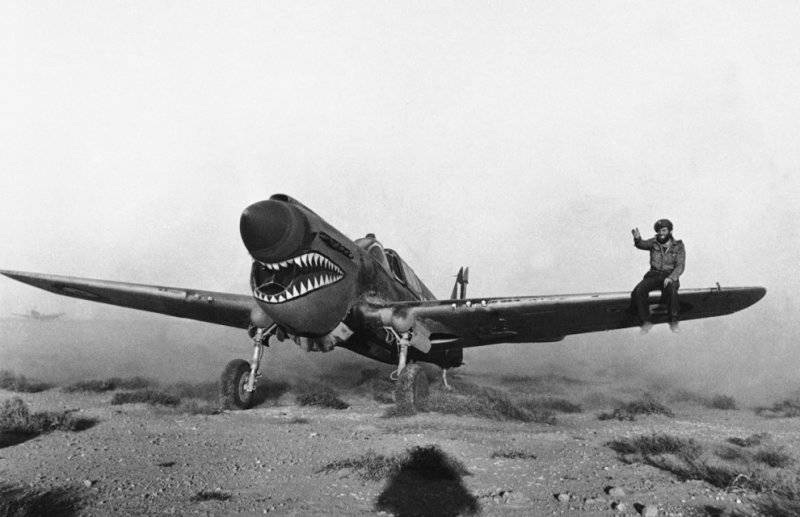
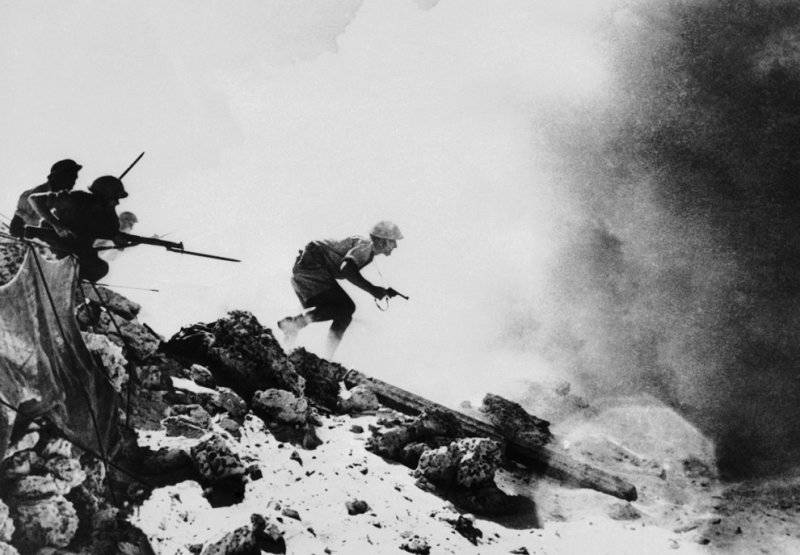
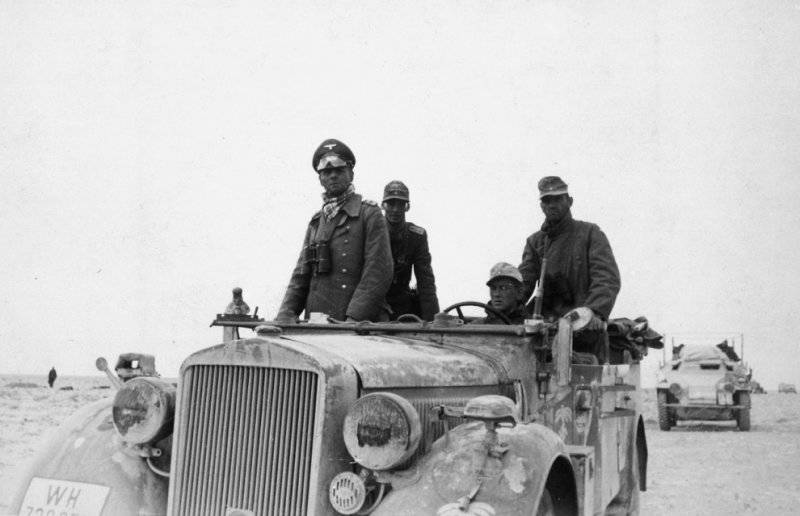
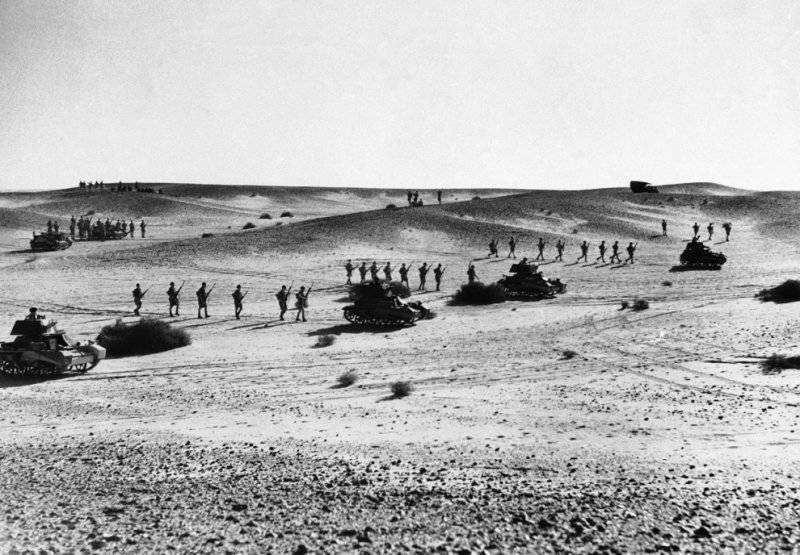
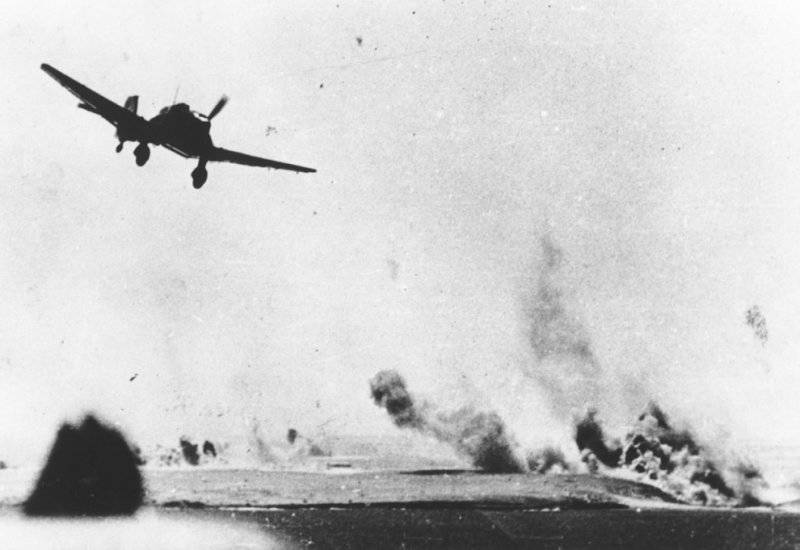
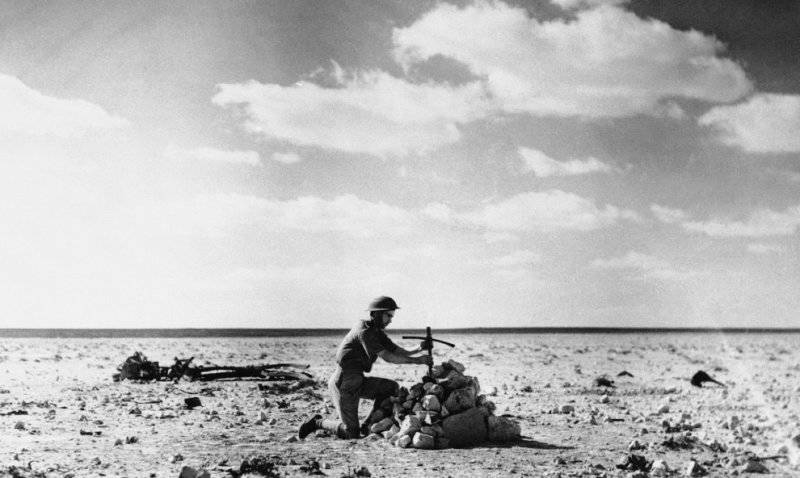
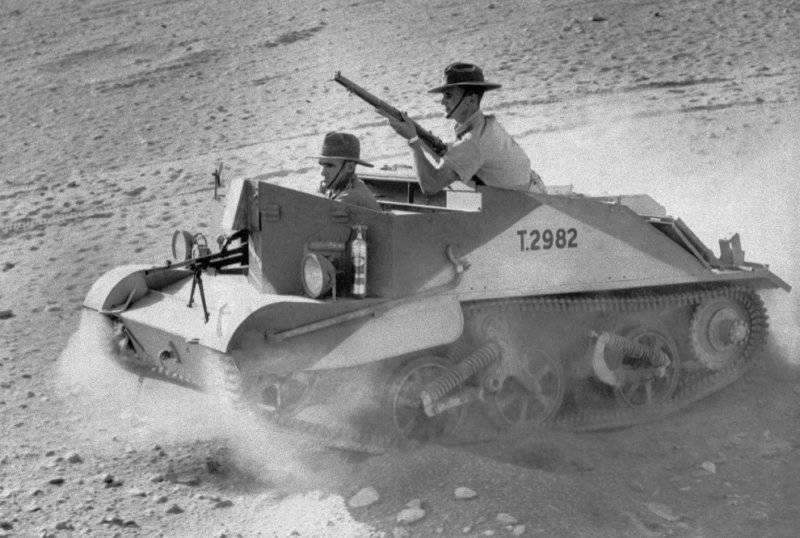
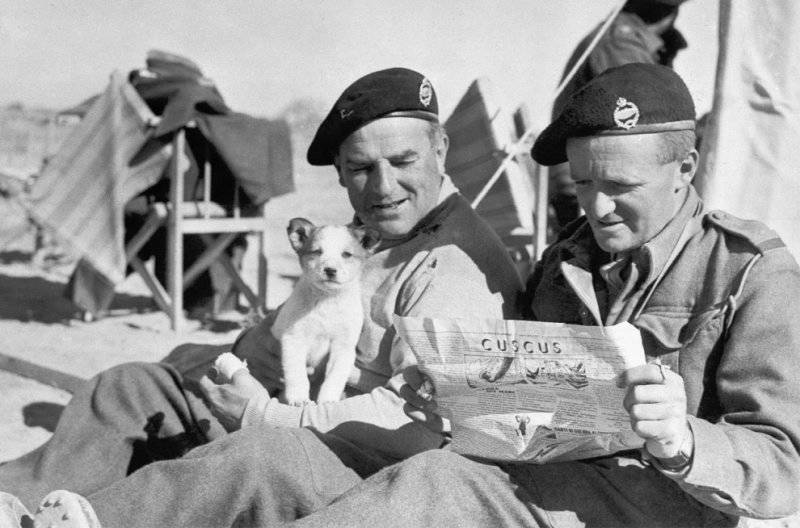
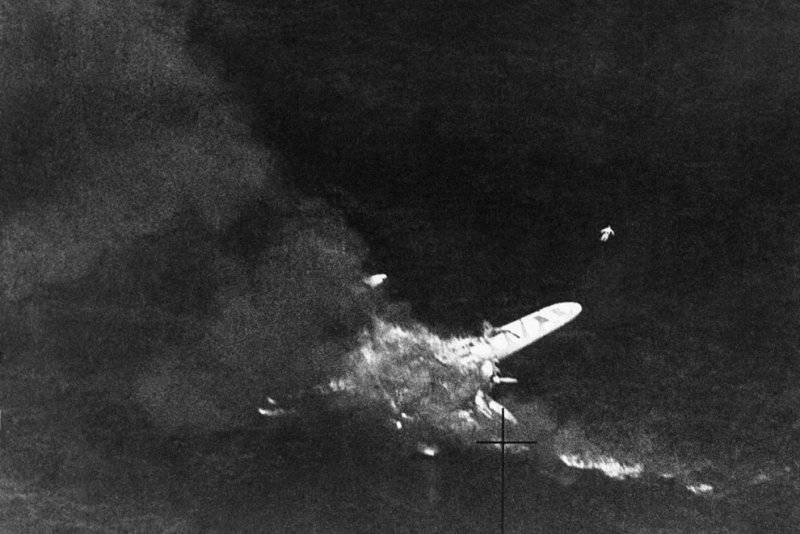
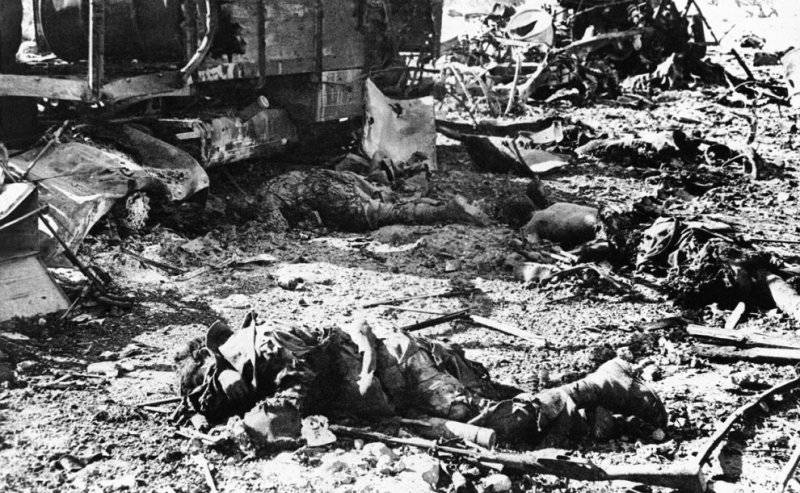
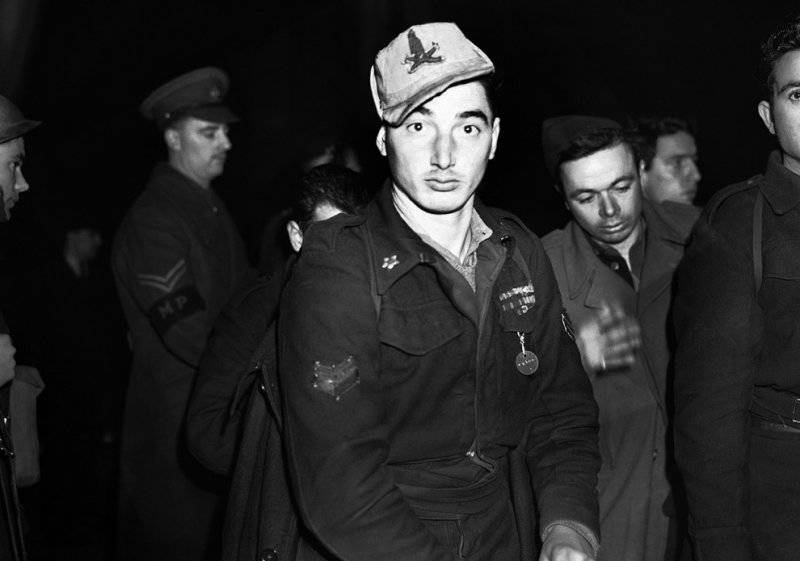
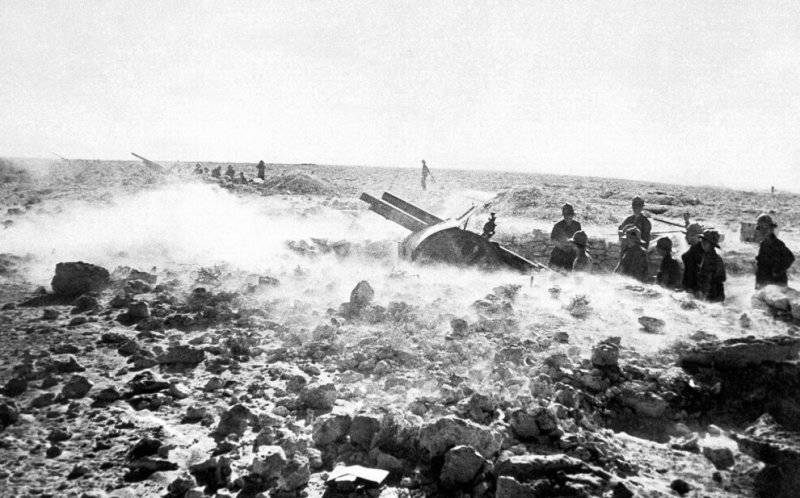
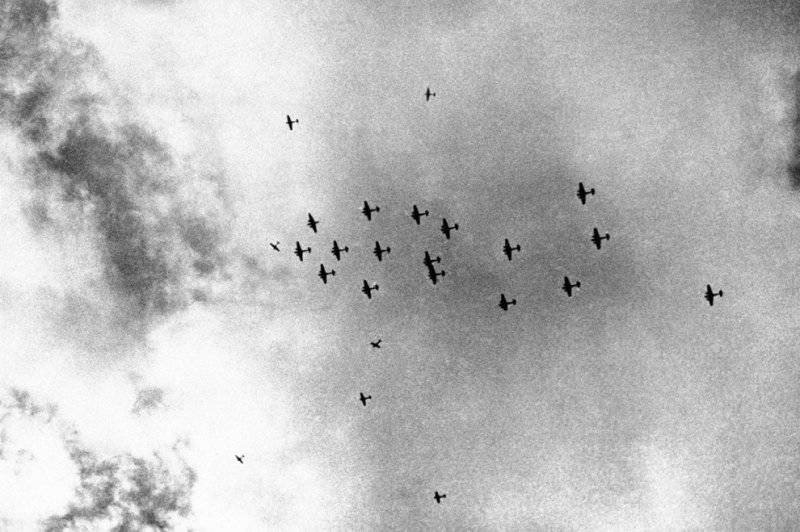
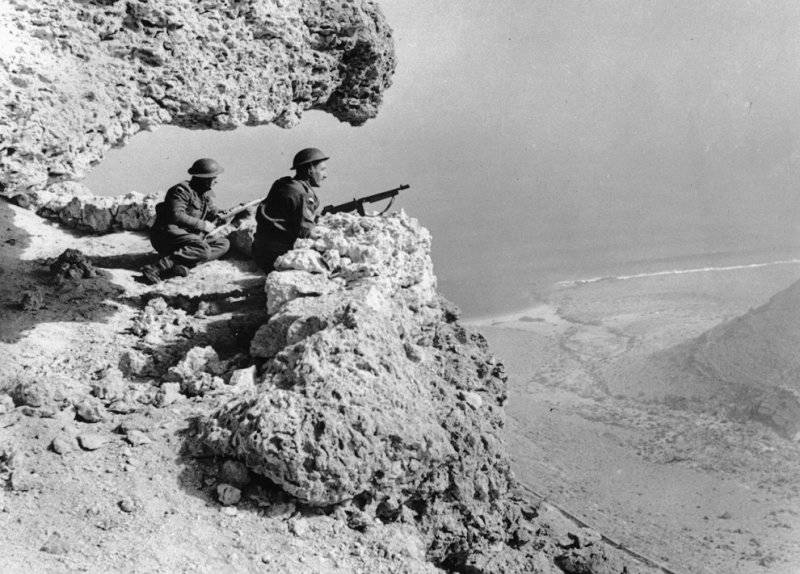
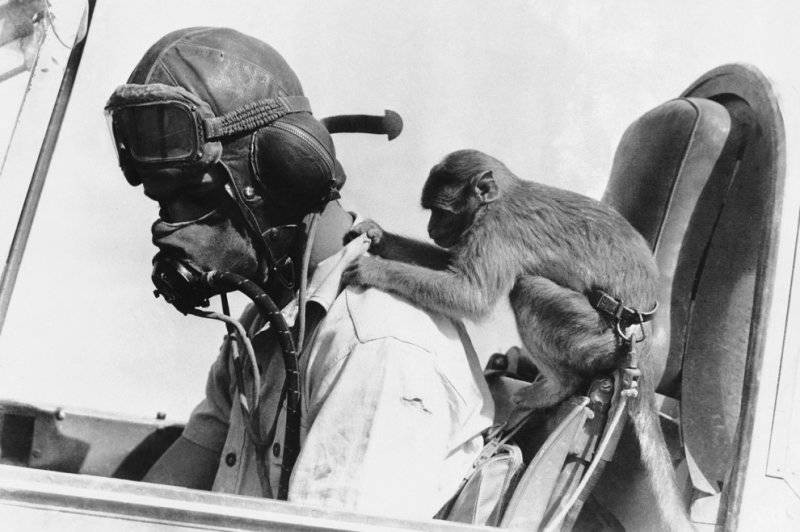
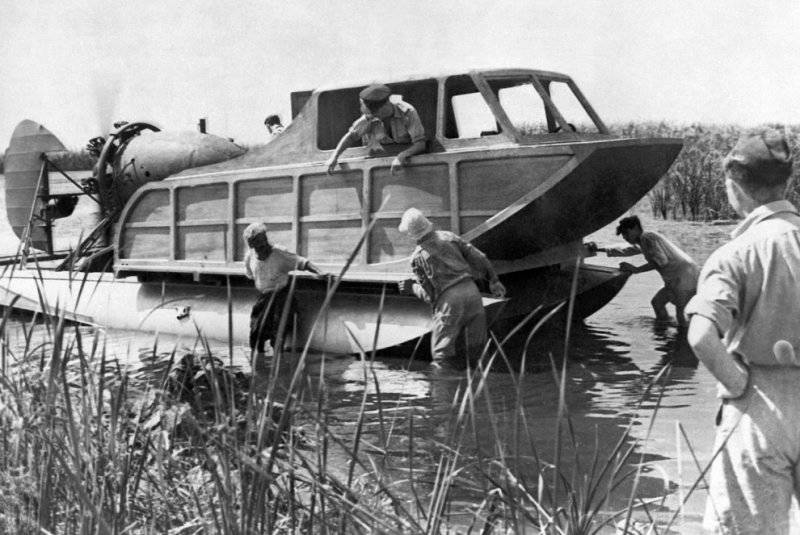
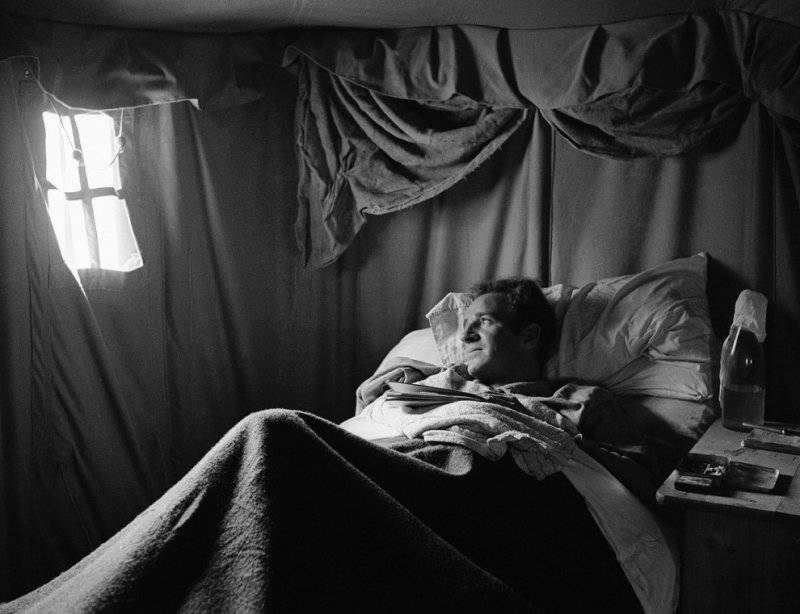
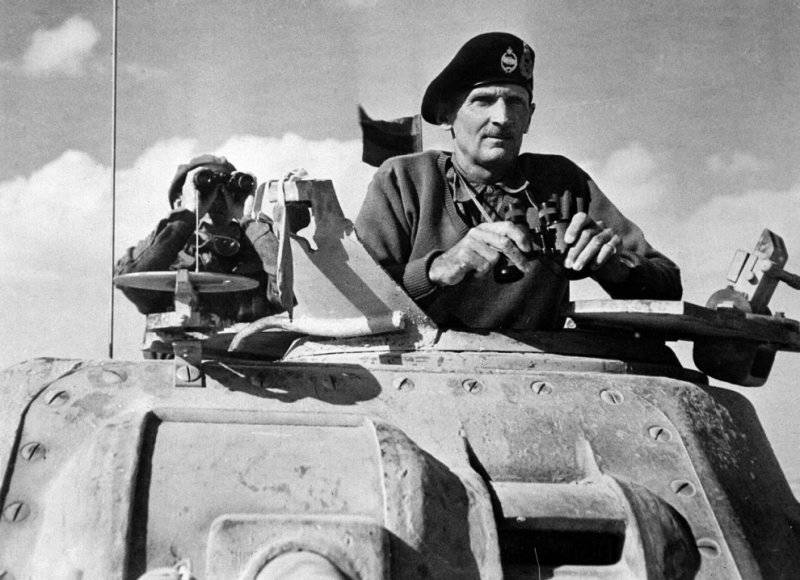
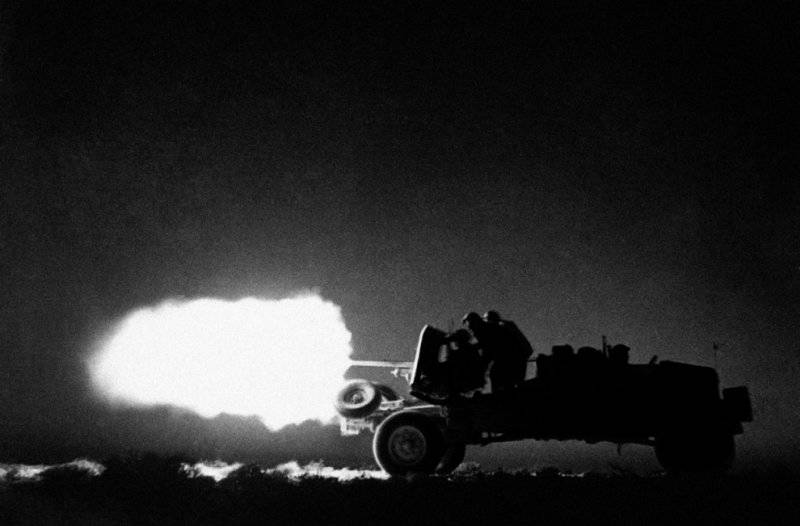
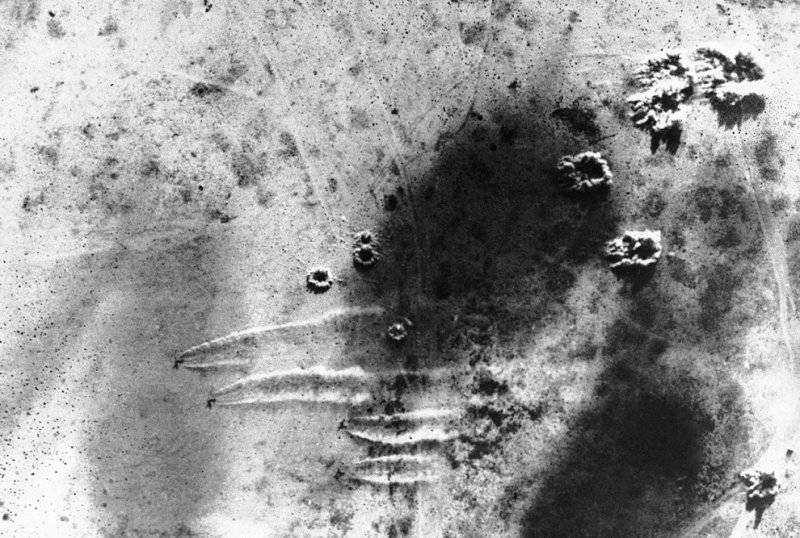
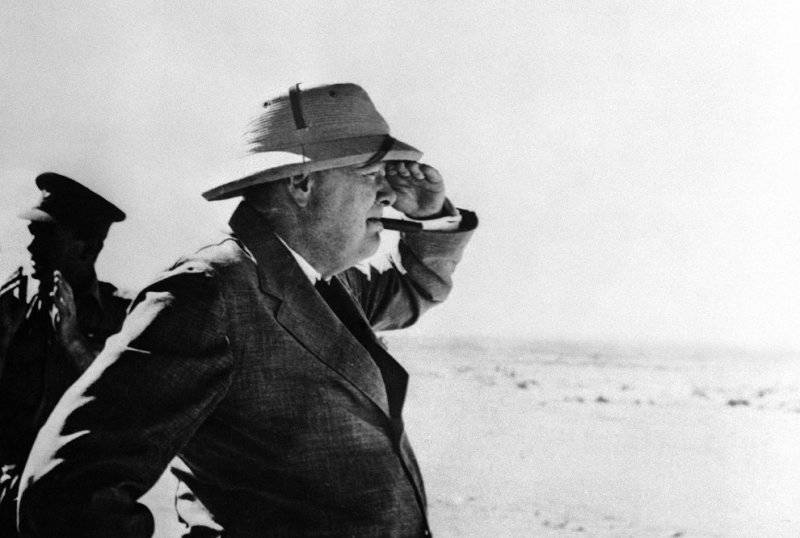
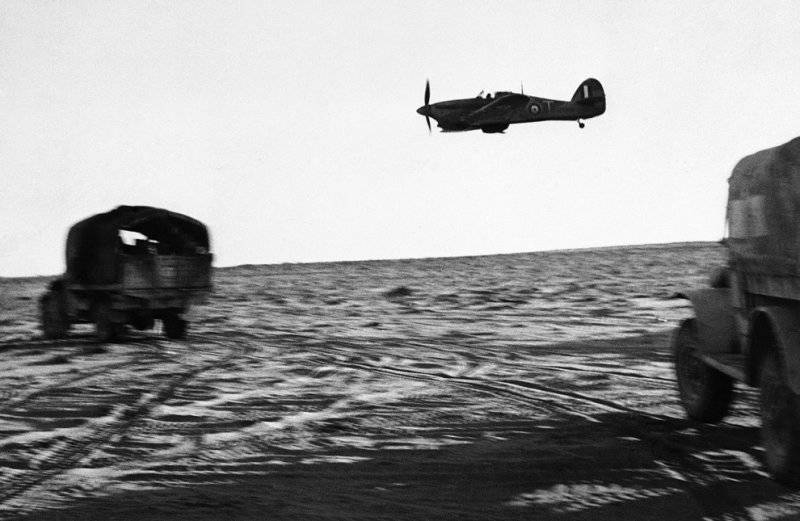
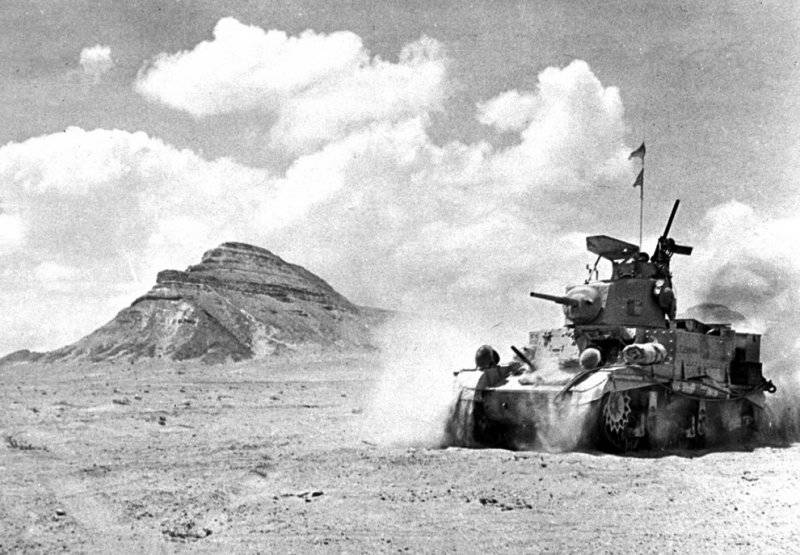
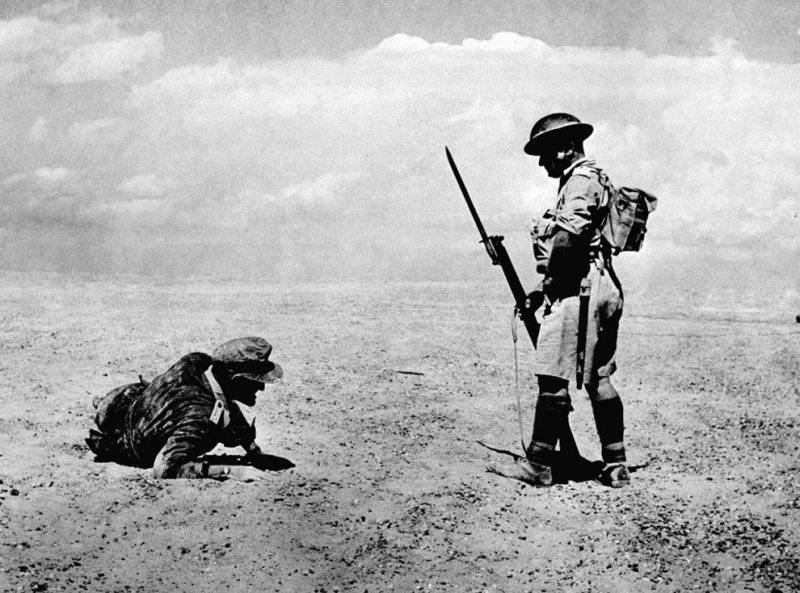
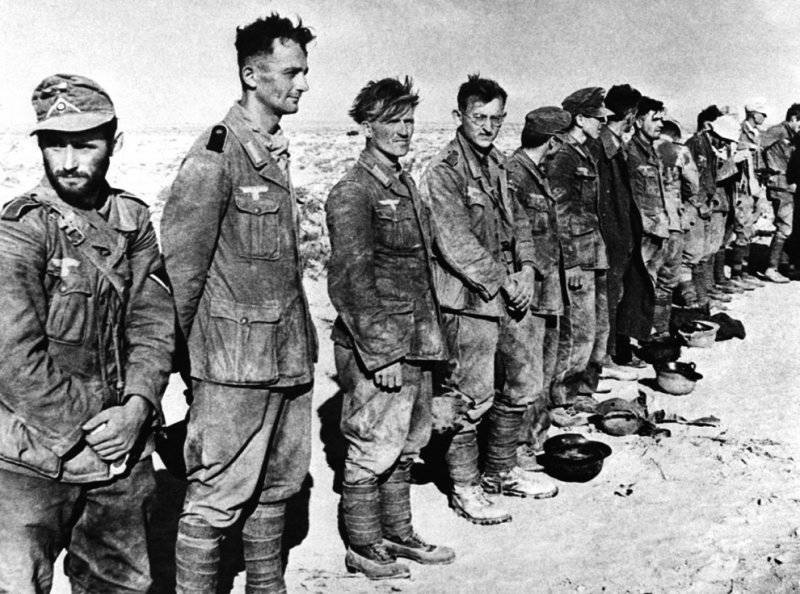
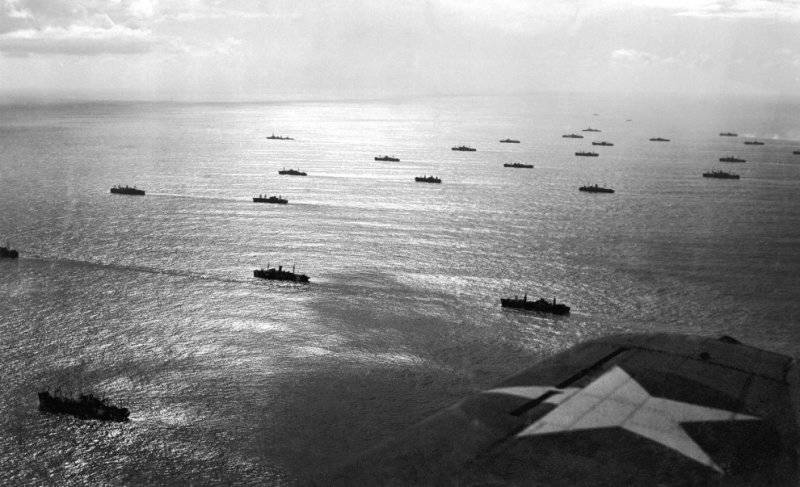
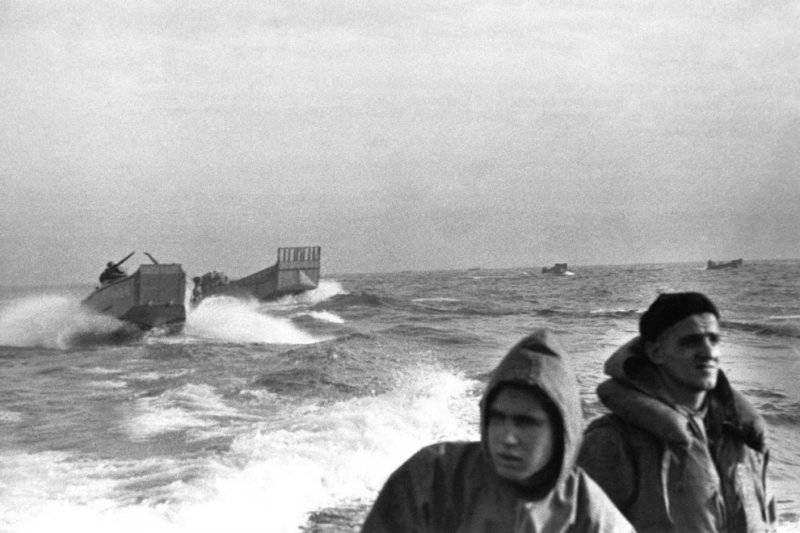
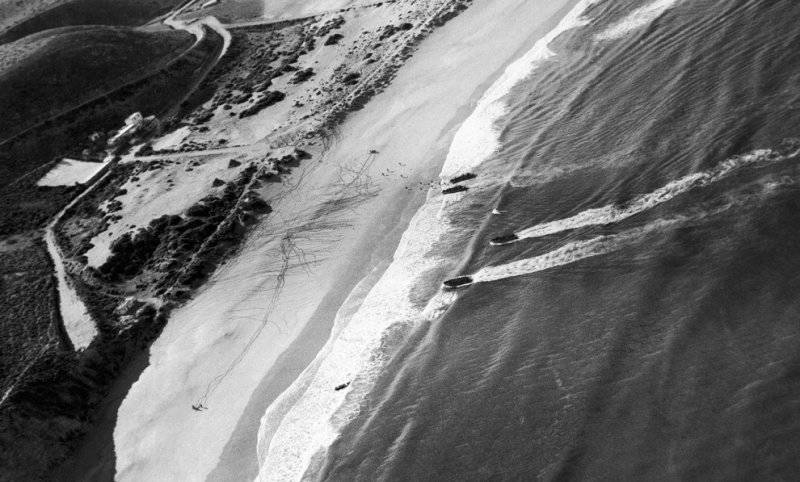
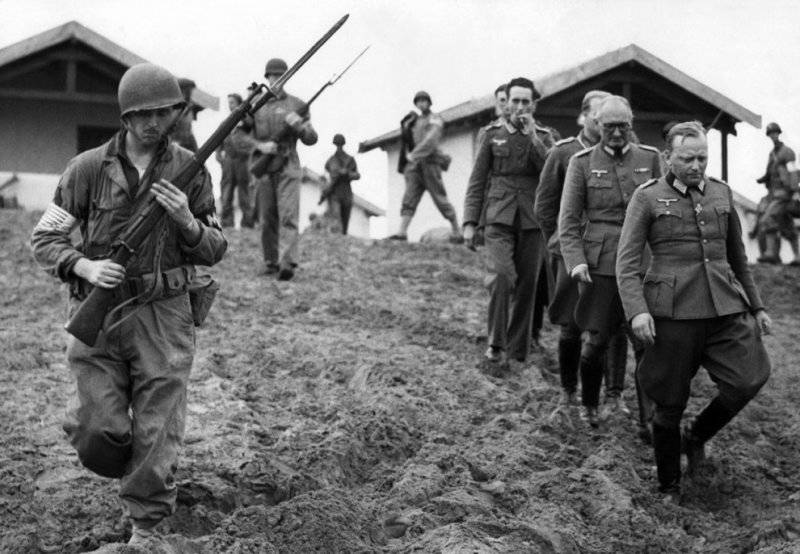
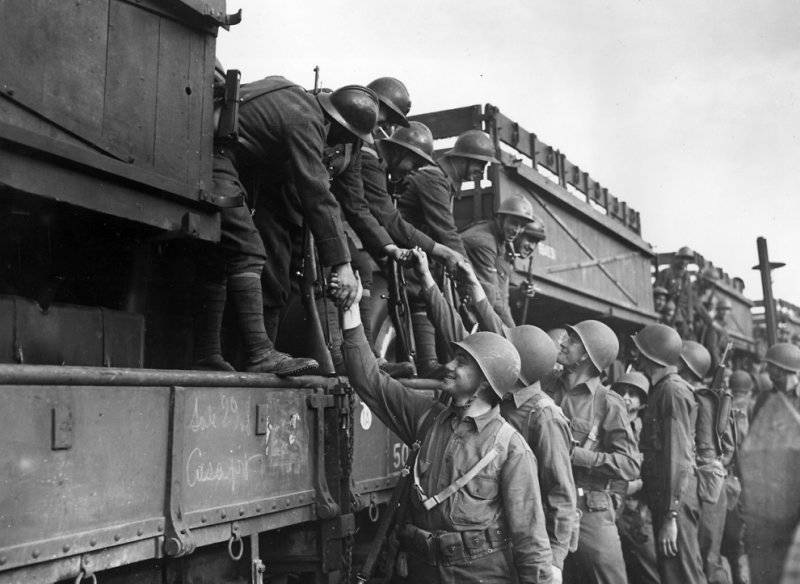
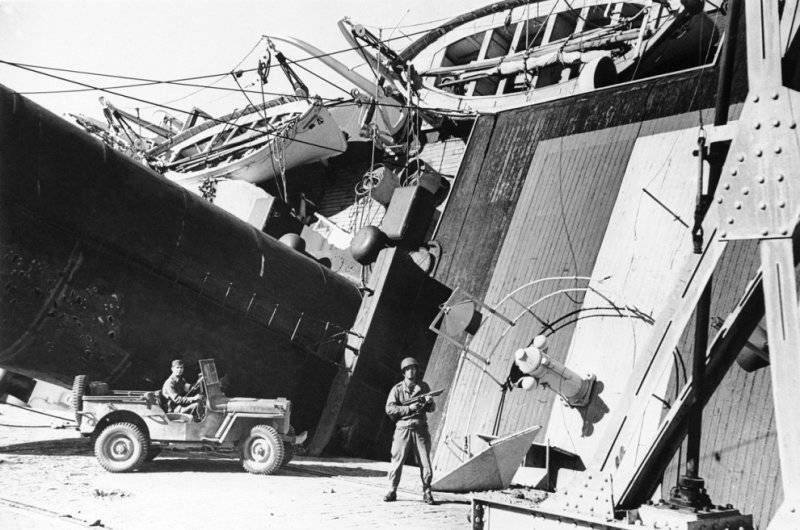
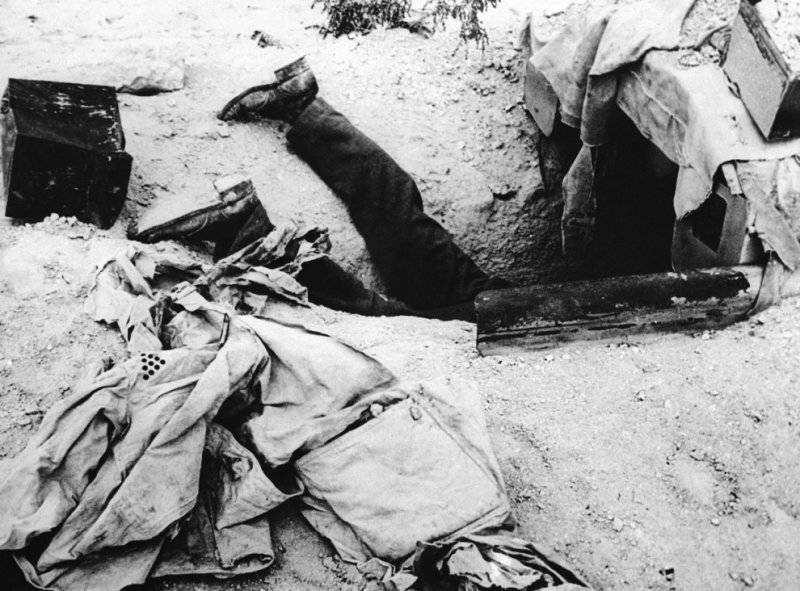
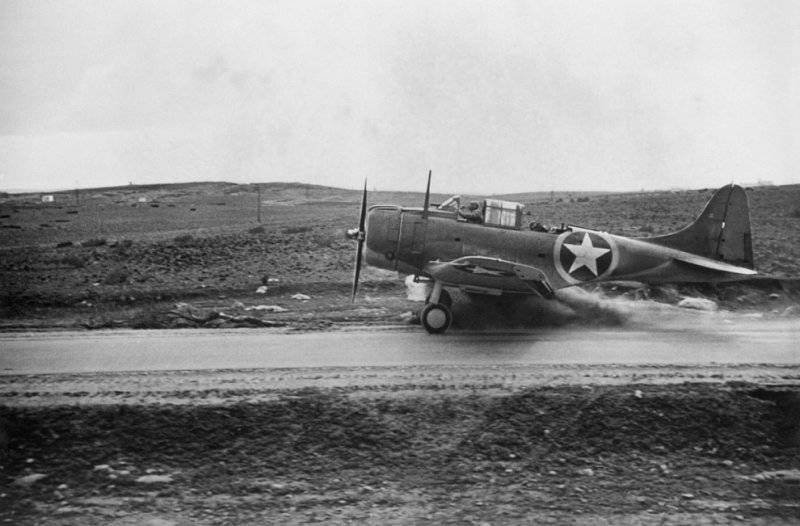
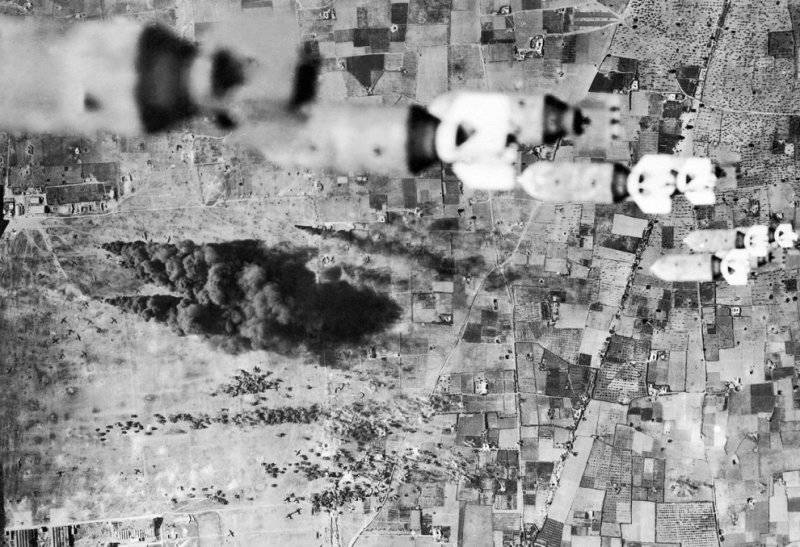
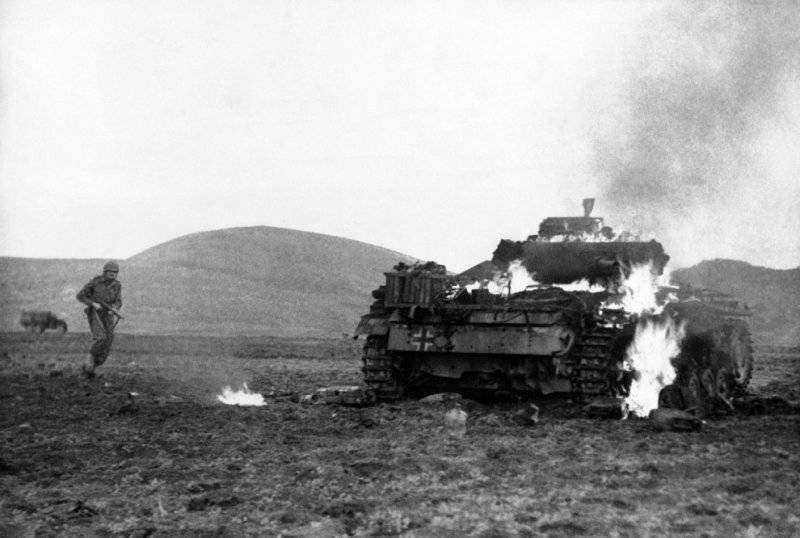
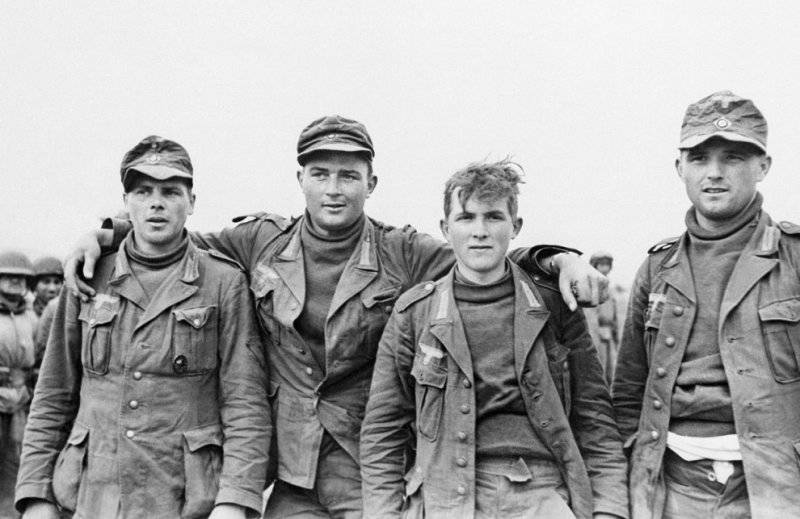
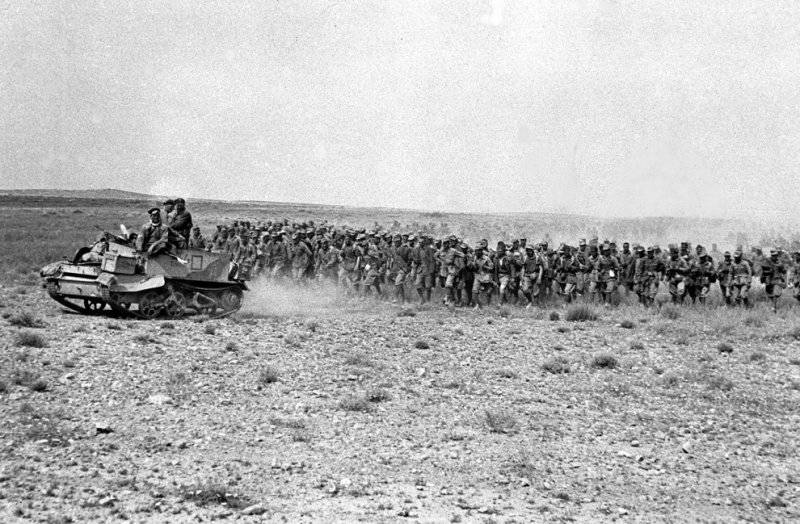
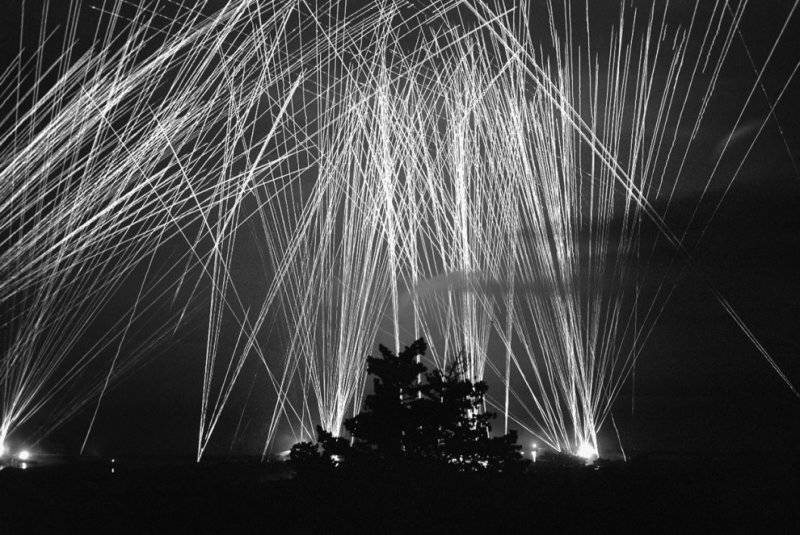
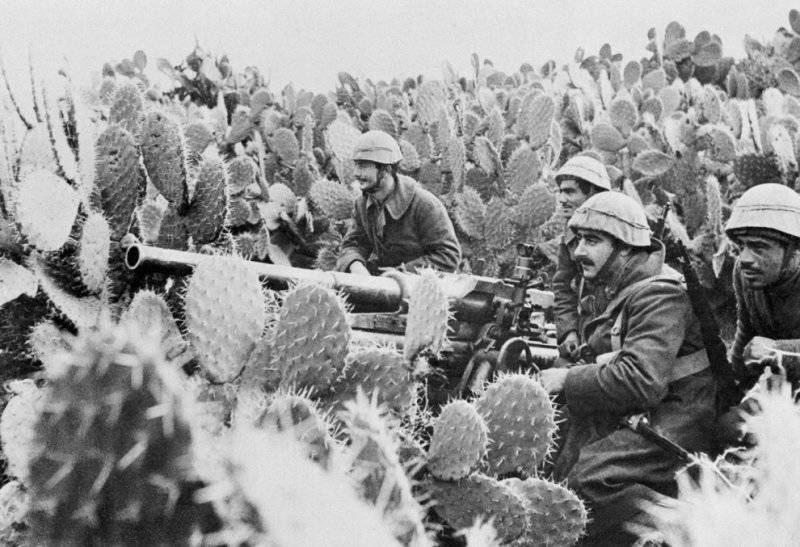
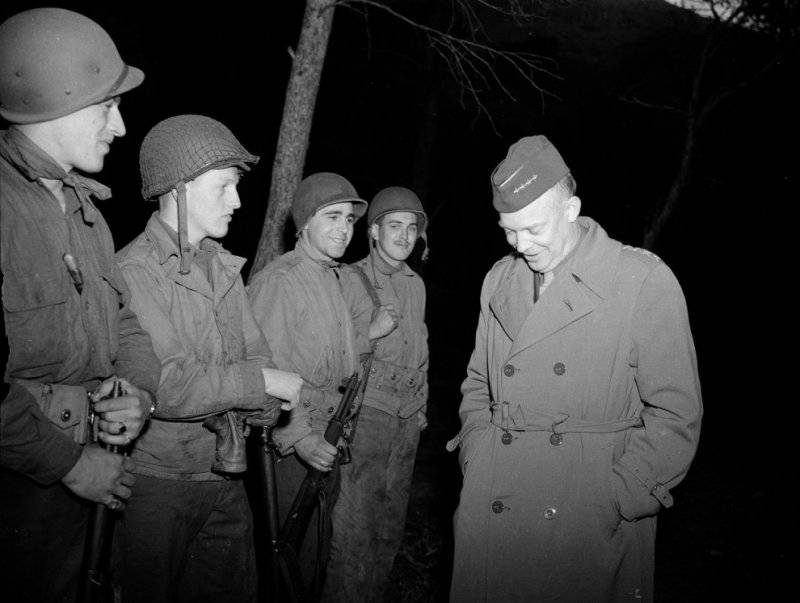
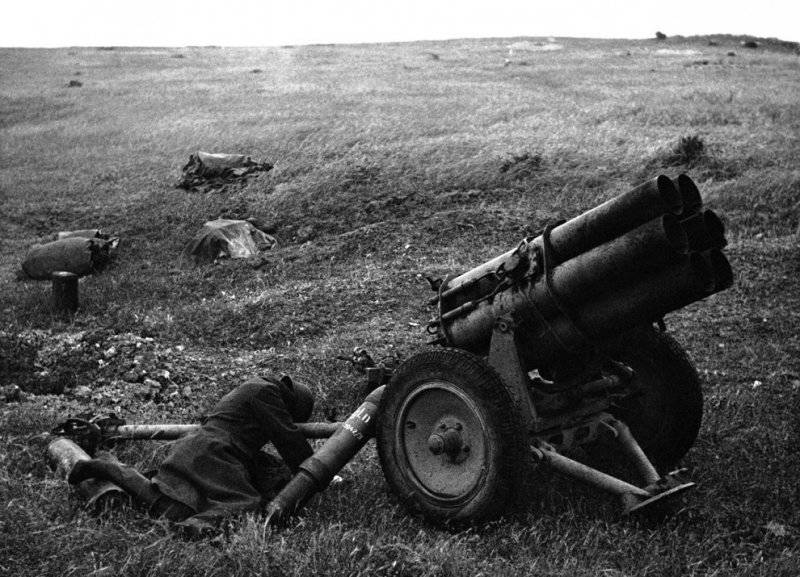
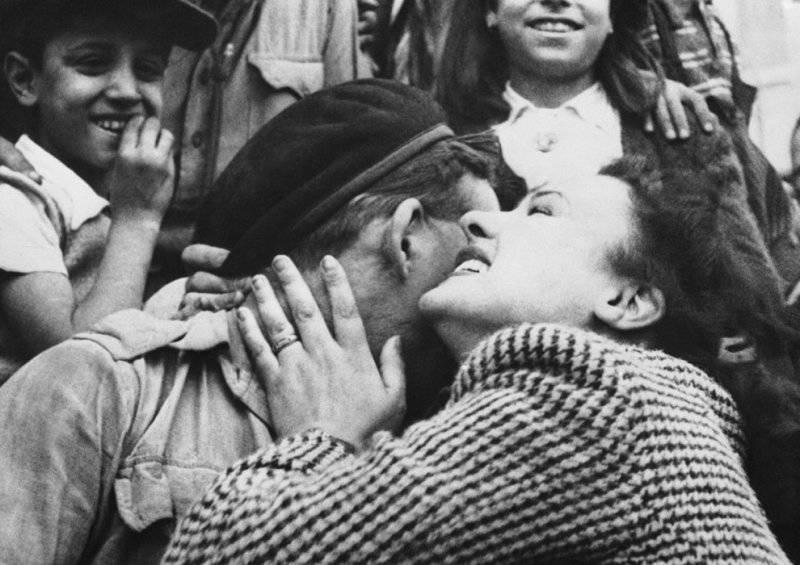
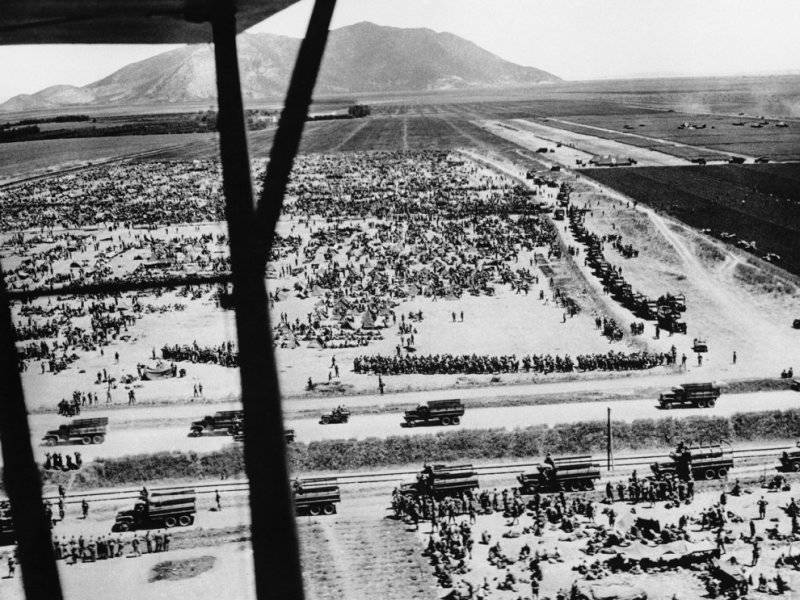
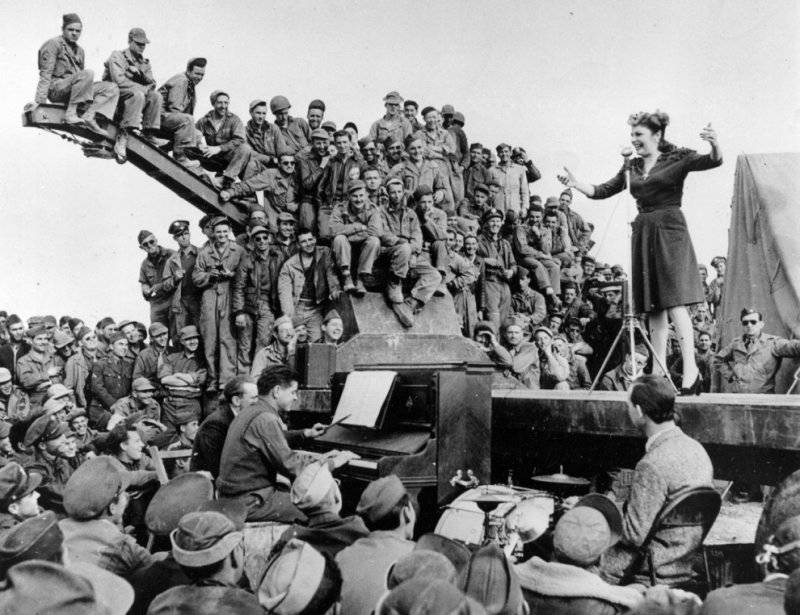
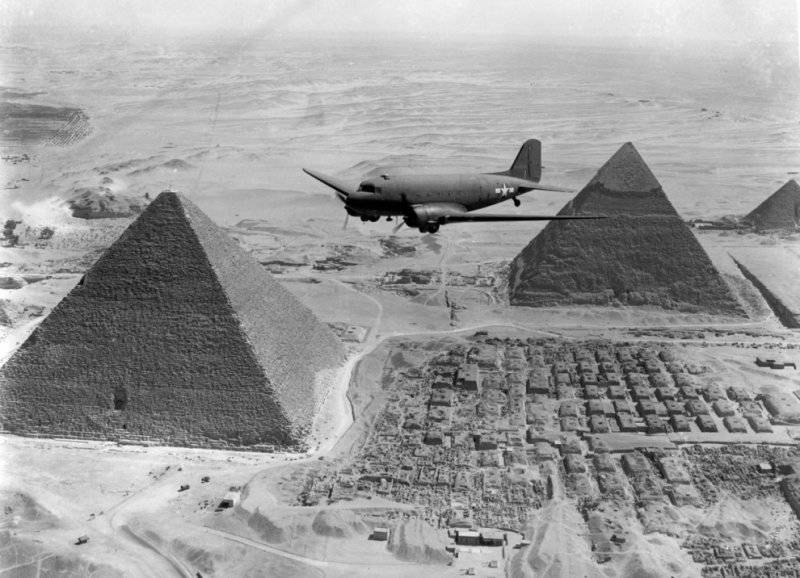
Information